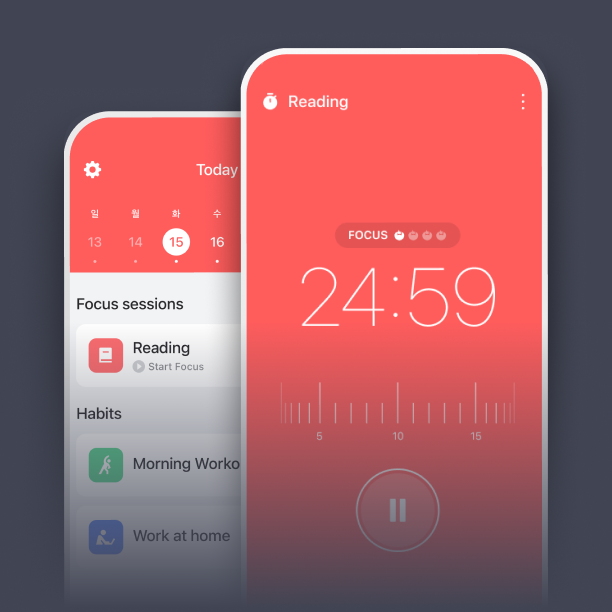What is distraction management tools?

What is distraction management tools?
In an age where distractions are just a tap away, effective distraction management tools have become crucial for anyone looking to boost their productivity. Whether you’re a student, a remote worker, or someone navigating daily life, these tools can help you regain control of your focus and time. But what exactly are these tools, and how can they help you?
Understanding Distraction Management
Distraction management involves strategies and tools designed to minimize interruptions and foster focus. It’s not just about blocking out noise or turning off notifications; it’s about creating an environment conducive to concentration. This approach fits seamlessly into broader productivity and time management strategies.
The Nature of Distractions
Distractions come in many forms, from digital notifications to background chatter in a café. In a work setting, you might find yourself sidetracked by constant email alerts or social media updates. Students often face interruptions from their phones or chatty classmates. Even at home, the lure of television or household chores can pull your attention away from tasks at hand. These distractions can significantly impact productivity, leading to increased stress and inefficiency.
The Psychology Behind Distractions
Understanding how distractions affect our cognitive processes is essential. Studies show that distractions can derail our focus, making it harder to return to the task at hand. The brain can take up to 25 minutes to regain full concentration after an interruption. This phenomenon is often referred to as “task-switching,” where the constant movement between tasks impairs overall performance. The implications are clear: managing distractions isn’t just a matter of preference; it’s a necessity for maintaining cognitive health and productivity.
Types of Distraction Management Tools
There are various tools available to help you manage distractions effectively. These can be broadly categorized into digital applications, physical tools, and environmental adjustments.
Digital Tools and Applications
One of the most effective ways to combat distractions is through digital tools. Several applications cater to this need:
-
Freedom: This app allows users to block distracting websites across all devices simultaneously. It’s ideal for those who struggle with social media or news sites during work hours.
-
Focus@Will: Designed to enhance concentration, this app offers background music scientifically tailored to improve focus and productivity.
-
StayFocusd: A browser extension that limits the amount of time you can spend on distracting sites, helping you stay on track with your tasks.
For further insights, check out The 8 best apps to help you focus.
Physical Tools for Distraction Management
Physical tools can also play a significant role in distraction management. Consider using:
-
Planners: They help organize tasks and set priorities, allowing you to visualize your day and stay on track.
-
Timers: Techniques like the Pomodoro Technique, where you work in focused bursts followed by short breaks, can enhance productivity.
-
Noise-Cancelling Headphones: These are essential in noisy environments, allowing you to create a personal bubble of focus.
Environmental Adjustments
Sometimes, managing distractions requires altering your surroundings. A well-organized and decluttered workspace can significantly improve focus. Removing unnecessary items, setting specific zones for work, and minimizing visual clutter can create a more conducive work environment.
Implementing Distraction Management Tools Effectively
Choosing and implementing distraction management tools requires thoughtful reflection and planning.
Identifying Your Distraction Triggers
The first step is to recognize what distracts you the most. Is it notifications from your phone? The allure of social media? By identifying your specific triggers, you can select the right tools to address them effectively.
Creating a Balanced Approach
It’s often most effective to combine multiple tools and strategies. For instance, you might use a digital app to block distractions while employing a planner to organize your tasks. This multifaceted approach can help you maintain focus over the long run.
Measuring the Effectiveness of Distraction Management Tools
Once you’ve implemented distraction management tools, it’s essential to evaluate their effectiveness.
Setting Metrics for Success
Defining what success looks like in distraction management is crucial. Consider tracking metrics such as the number of tasks completed, hours spent in focused work, or even personal satisfaction levels. By establishing clear goals, you can gauge whether your tools are making a difference.
Adjusting Strategies Based on Results
Flexibility is vital. If a particular tool isn’t working as expected, be open to modifying your approach. This might mean trying new apps, adjusting your work environment, or even changing your daily routines.
Conclusion and Next Steps
Incorporating distraction management tools into your life can lead to significant improvements in productivity. Whether you choose digital applications, physical tools, or environmental adjustments, the right strategies can help you regain focus and achieve your goals. Start evaluating your distractions today and take actionable steps toward a more productive lifestyle. Remember, the key to success is not just in choosing the right tools but also in continuously refining your approach to managing distractions.
Photo by Kaboompics.com
